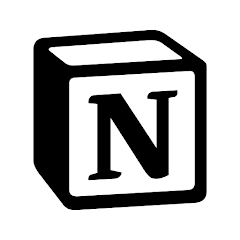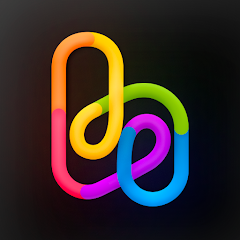Remote work isn’t going anywhere, and neither is the need for powerful project management tools. After testing dozens of apps with distributed teams across different time zones, we’ve compiled the definitive list of project management apps that actually work for remote collaboration in 2025
1. Notion ⭐ 4.9/5

Best for: Teams wanting all-in-one workspace flexibility Pricing: Free for personal use, $8/month per user for teams
Notion continues to dominate with its database-driven approach. Create custom workflows, embed documents, and manage projects with unmatched versatility. The AI assistant now handles routine task creation, making it incredibly efficient for remote teams
Pros: Infinite customization, excellent documentation features, AI integration Cons: Steep learning curve for non-technical users
2. Linear ⭐ 4.8/5

Best for: Engineering teams and product development Pricing: Free for up to 10 members, $8/month per user after
Linear’s lightning-fast interface and GitHub integration make it perfect for development teams. The triage feature automatically organizes incoming issues, while keyboard shortcuts ensure power users stay productive
Pros: Blazing fast performance, excellent developer tools, clean UI Cons: Limited customization for non-development workflows
3. ClickUp ⭐ 4.7/5

Best for: Teams needing comprehensive features out-of-the-box Pricing: Free plan available, paid plans from $7/month per user
ClickUp packs everything into one platform: tasks, docs, goals, and time tracking. The 2025 update introduced smart templates that adapt based on your team’s work patterns, perfect for remote onboarding
Pros: Feature-rich, good value for money, strong automation Cons: Can feel overwhelming, occasional performance issues
4. Asana ⭐ 4.6/5

Best for: Marketing teams and creative projects Pricing: Free for teams up to 15, $10.99/month per user for premium
Asana’s timeline view and proofing features shine for creative remote teams. The new AI project assistant suggests optimal task assignments based on team member workloads and expertise
Pros: Intuitive interface, excellent for creative workflows, strong mobile app Cons: Limited customization, expensive for large teams
5. Monday.com ⭐ 4.5/5

Best for: Visual project tracking and client collaboration Pricing: From $8/month per user (3-user minimum)
Monday.com excels with its colorful, visual approach to project management. The client portal feature lets external stakeholders track progress without accessing your full workspace
Pros: Highly visual, great client features, excellent automation Cons: Can become expensive, limited free plan
6. Todoist ⭐ 4.4/5

Best for: Small teams focused on task management Pricing: Free plan available, $4/month per user for business features
Don’t underestimate Todoist’s simplicity. The natural language processing understands “every Tuesday at 2pm” and creates recurring tasks automatically. Perfect for remote teams wanting straightforward task management
Pros: Simple and clean, excellent natural language processing, affordable Cons: Limited project management features, basic reporting
7. Basecamp ⭐ 4.3/5

Best for: Teams prioritizing communication over complex features Pricing: $99/month flat rate for unlimited users
Basecamp’s flat pricing makes it cost-effective for larger remote teams. The Hill Charts feature provides unique visual progress tracking that helps remote managers understand project momentum
Pros: Unlimited users for flat fee, excellent communication tools, simple interface Cons: Limited advanced features, no time tracking, expensive for small teams
8. Trello ⭐ 4.2/5

Best for: Teams using Kanban methodology Pricing: Free plan available, $5/month per user for business features
Trello’s card-based system remains intuitive for remote teams new to project management. Butler automation handles routine card movements, while Power-Ups extend functionality without complexity
Pros: Easy to learn, affordable, good Power-Up ecosystem Cons: Limited reporting, not suitable for complex projects
9. Wrike ⭐ 4.1/5

Best for: Enterprise teams with complex approval processes Pricing: Free for up to 5 users, $9.80/month per user for professional plan
Wrike handles enterprise-level complexity while maintaining usability. Custom request forms streamline how remote teams receive and process new project requests
Pros: Robust reporting, good for complex workflows, strong security Cons: Expensive, steep learning curve, can feel overcomplicated
10. Height ⭐ 4.0/5

Best for: Teams wanting spreadsheet-like flexibility with modern UI Pricing: Free for up to 10 members, $8.99/month per user after
Height combines spreadsheet functionality with modern project management. The autonomous features learn from your team’s patterns and suggest optimizations for remote work efficiency
Pros: Spreadsheet-like flexibility, AI-powered insights, clean design Cons: Newer platform with smaller community, limited integrations
Our Verdict
For most remote teams in 2025, Notion offers the best balance of flexibility and power, while Linear excels for development-focused teams. ClickUp provides the most features for the price, making it ideal for budget-conscious teams wanting comprehensive functionality
Choose based on your team’s primary need: documentation (Notion), development (Linear), or comprehensive project management (ClickUp). The best app is the one your remote team will actually use consistently.
Quick Decision Framework:
- Small creative team: Asana
- Development team: Linear
- All-in-one workspace: Notion
- Budget-conscious: ClickUp
- Enterprise: Wrike

